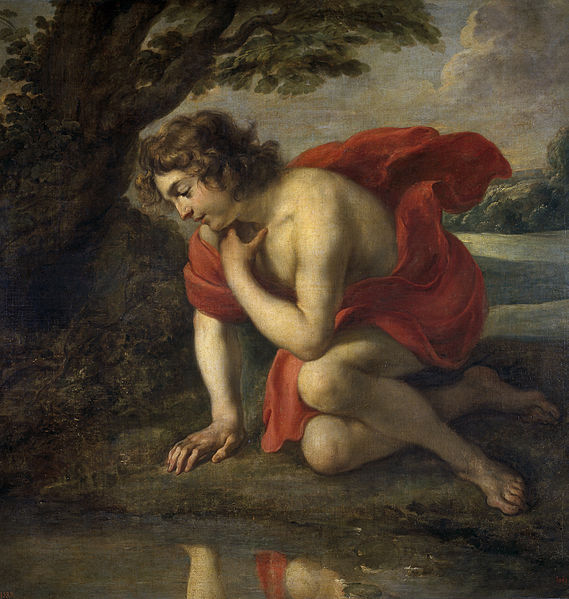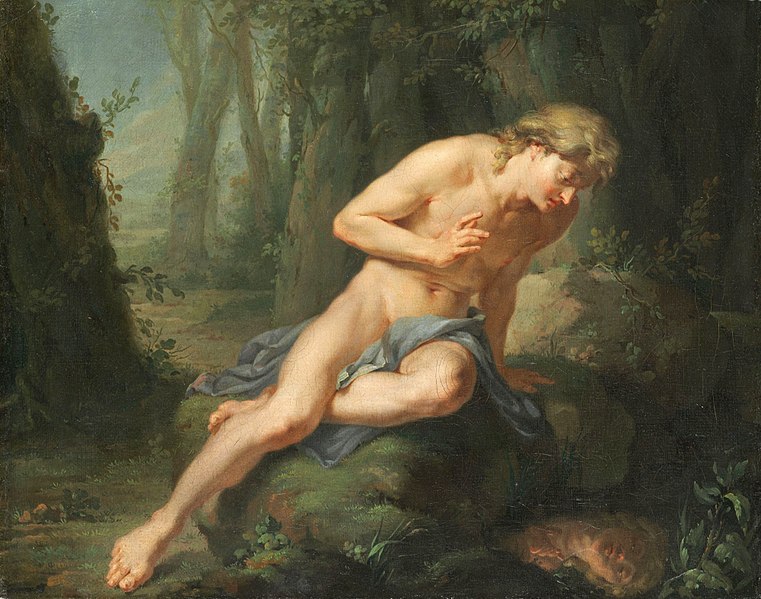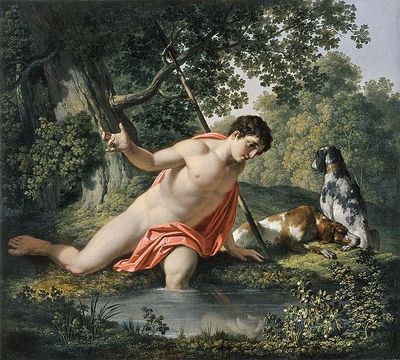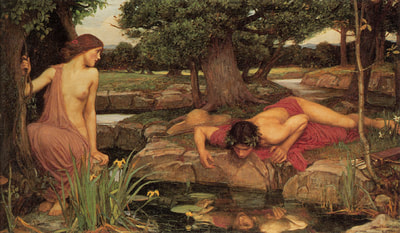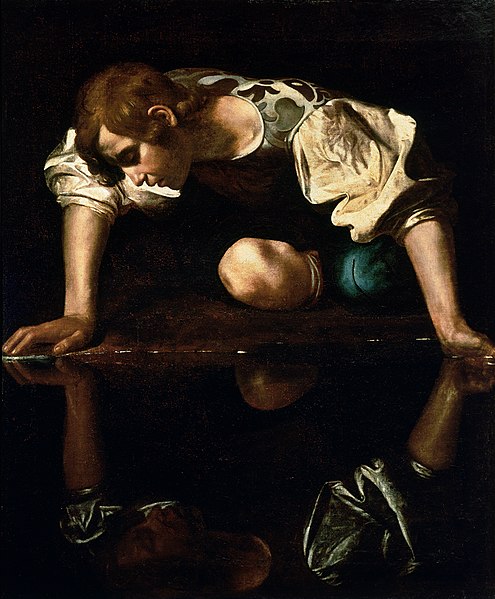Narcissus
Narcissus - Jan Cossiers (1600-1671) - Prado Museum
Date: 1636-38
Medium: Oil on canvas
Dimensions: 97.0 x 93.0 cm
Medium: Oil on canvas
Dimensions: 97.0 x 93.0 cm
|
Narcissus is an oil on canvas painting undertaken by Jan Cossiers between 1636-38 for the Torre de la Parada, and depicts the tale of Narcissus from Greek mythology.
Cossiers with Narcissus has the named figure looking longingly at his own reflection in a pool, for Narcissus could love no one but himself. Despite the pleadings of nymphs, Narcissus would die there by the pool looking at his reflection. Rubens also undertook work for the Torre de la Parada, and Cossier may have based his work on sketches by him. More information about Narcissus can be found here - (website opens in new window) |
|
Jan Cossiers
Born: 15 July 1600: Antwerp
Died: 4 July 1671; Antwerp
Nationality: Flemish
Art Movement: Baroque
Painting School: Flemish School, Antwerp School
Died: 4 July 1671; Antwerp
Nationality: Flemish
Art Movement: Baroque
Painting School: Flemish School, Antwerp School
